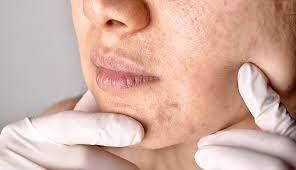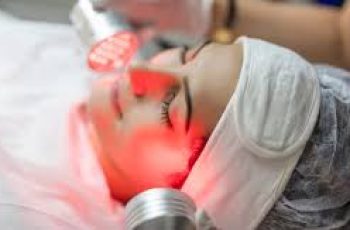
What Causes Clogged Pores and Comedones?
One of the most common problems people encounter in skin care is clogged pores. The definition of clogged is when hair follicle pores are filled with debris causing a comedone. At my practice, I see patients dealing with clogged pores and acne every day. Whether you have clogged pores on your nose, chin, forehead, or anywhere else on your skin, this guide will walk you through prevention and treatment strategies, as well as help you identify the different types of clogged pores.
To make sure you only buy the right products for your specific skin type, always look for your Baumann Skin Type Octagon when you shop. Don’t know your skin type octagon number- take the quiz!
Causes of Clogged Pores
Clogged pores are caused when the skin’s natural exfoliation process called desquamation is disrupted.
This disruption can be caused by:
Dry, flaky skin clogging pores
using skin care products with comedogenic ingredients
Pollution, dirt, and debris from the environment
habits such as over exfoliating the skin.
hormone fluctuations
A buildup of sebum or other oils on the face
Using your skin care products in the wrong order
What are comedones?
Comedones are the scientific term for clogged pores. They are very common on the face, especially on the nose and forehead where the skin has an increased amount of sebaceous glands (oil glands).
Clogged pores are more common in oily skin types. However, dry skin types are also at risk for clogged pores. We explain why dry skin causes clogged pores below.
Clogged pores can be caused by comedogenic skin care ingredients, over exfoliating or using the wrong skin care products for your Baumann Skin Type.
Take the Quiz
Names and Terms for Clogged Pores
While some technical differences exist between most of the following, there are many names for clogged pores on the chin, cheeks, forehead and nose such as:
blackheads (closed comedones)
whiteheads (open comedones)
milia
acne cysts
Sebum plugs
Congested skin
Sebaceous filaments
White worm pimple is my favorite term that my dermatology patients use. Its so descriptive of how the white pus looks when you squeeze it out of the pore.
What do clogged pores look like?
Clogged pores can be white, pink, brown or black.
Pores with whiteheads are clogged with dead skin cells and oils like sebum.
Blackheads are oxidized dead skin cells. The air causes a chemicals reaction that makes pores look dark.
Antioxidants can block oxidation which prevents the pus in pores from turning black. This is why you will see antioxidants in moisturizer to prevent clogged pores.
clogged pores on nose
Is it OK to squeeze clogged pores?
It is best to have your clogged pores extracted is by a trained medical aesthetician.
If you are dead-set on popping your own pimples, we have a whole blog on how to pop pimples.
If you end up with pimple scabs because you picked at your clogged pores too much, here is our blog on acne scabs.
Will exfoliating clean my pores?
If you are like many of my patients in my dermatology practice, you might believe that exfoliating the skin will help clogged pores.
However, over-exfoliating the skin is actually a cause of clogged pores.
Over exfoliating disrupts the desquamation process, which causes pores to get filled with dead skin cells.
What is the white stuff that comes out of a pimple?
When you squeeze your pores, white pus comes out either in a string, or it will shoot out like a little shotgun shell.
Whiteheads are dead skin cells mixed with sebum and dirt. This white stringy discharge from pores may be smelly if it contains a lot of skin bacteria. Skin bacteria has a distinctive smell.
The stringy pus should be washed off your skin with a cleanser to prevent spreading bacteria to other hair follicles.
Black liquid that comes out of pores is dead skin cells and sebum that have oxidized and turned dark in color.
Why are my pores always clogged?
Pores get blocked when the desquamation process inside the hair follicle is not working properly. This is called dyskeratinization or abnormal follicular keratinization.
The most likely answer to the problem of always having clogged pores is that you don’t have the right cleanser and skin care routine for your skin type. Take The Baumann Skin Type Quiz for free today to find the best products for your skin!
Take the Quiz
how pores get clogged with desquamated skin cells
When dyskeratinization occurs, the keratinocytes clump together and clog up the hair follicle.
how pores get clogged
What causes the keratinocytes to clump together and block the hair follicle? Why does dyskeratinization occur?
There are many things that can cause dyskeratinization or the skin cells to cling to each other and clog the hair follicle and pore such as:
Using the wrong skin care products for your skin type
Inflammation
Dehydration
Over-exfoliation
Genetics
Medications
Increase sebum (oil)- depending upon the types of lipids in your sebum
The types of lipids found in sebum (which can be related to diet)
Growth factors like epidermal-derived growth hormone
Low Vitamin A levels
Hair Products and clogged pores
Many hair products that smooth hair and prevent frizz can clog pores. If you are acne prone, avoid using hair products that contain acne causing ingredients such as isopropyl myristate and coconut oil. Wash your face after rinsing off hair conditioners.
The face should be washed thoroughly at night to remove all sweat, dirt, oil, hair products and makeup from the skin.
How to get rid of clogged pores?
Remember – every single product you put on your skin matters. and the order that you use them is important.
To learn how to clear pores read this blog.
The best way to get rid of clogged pores is to prevent them with the right skin care routine. Using the wrong cleanser or moisturizer can cause comedones because it can lead to inflammation and/ or dehydration that are known to cause clogged pores.
Avoid comedogenic ingredients if you have a problem with clogged pores, comedones, and milia.
If you are past the point of prevention, the two best ingredients to clear pores are salicylic acid and retinol- but make sure these are right or your Baumann Skin Type before you use them.
You can find a list of comedogenic cosmeceutical ingredient here at this link.
These are our favorite products to unclog pores:
To prevent and to get rid of comedones use the right skin care products for your Baumann Skin Type!


